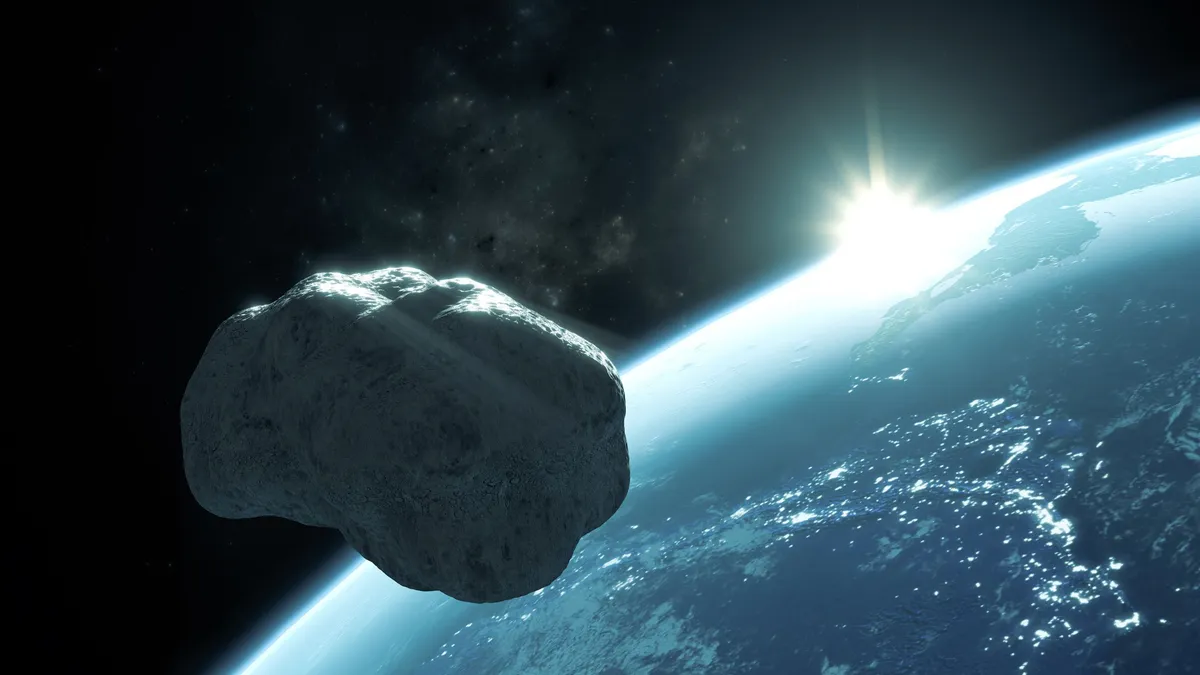
NASA's ambitious plans to fly the OSIRIS-APEX spacecraft alongside the potentially hazardous asteroid Apophis in 2029 will proceed for at least another year. Following earlier threats of mission cancellation, the OSIRIS-APEX spacecraft received a crucial last-minute allocation of $20 million in the House budget bill. This funding will ensure that the spacecraft can continue its basic operations throughout the next fiscal year. However, the future of 18 other NASA missions, which are set to cease operations on October 1, remains uncertain due to the ongoing government shutdown.
"We were incredibly relieved and grateful," said Dani Mendoza DellaGiustina, the principal investigator of OSIRIS-APEX at the University of Arizona, in an email to Live Science. The announcement of the funding was first made on October 7 during a meeting of the National Academies' Committee on Astrobiology and Planetary Sciences, as reported by Ars Technica.
The OSIRIS-APEX mission stands for Origins, Spectral Interpretation, Resource Identification and Security — Apophis Explorer. This mission is set to observe the quarter-mile-wide (400-meter) asteroid Apophis, which was once thought to pose a minor threat to Earth during its upcoming close encounter in 2029. Fortunately, further observations revealed that Apophis, named after an ancient Egyptian god associated with chaos, will safely pass by Earth. Its trajectory will bring it within the orbit of geostationary satellites, approximately 22,000 miles (36,000 km) away, making it potentially visible to the naked eye.
Despite Apophis's safe passage in 2029, there remains a risk of a direct impact in the distant future, as its orbit periodically intersects Earth's path. The OSIRIS-APEX mission utilizes the existing OSIRIS-REx spacecraft, which successfully collected a sample from the asteroid Bennu in 2020 and returned it to Earth, providing invaluable insights into the early solar system. DellaGiustina and NASA have emphasized that using the existing spacecraft to observe Apophis will be more cost-effective than launching a new mission.
"Apophis is one of the most compelling near-Earth asteroids we've ever discovered," DellaGiustina stated. "By studying Apophis during and after its Earth encounter, we have a unique opportunity to understand how close planetary flybys reshape small bodies, including seismic shaking, surface landslides, and changes in rotation and orbit."
In May, the Trump administration placed OSIRIS-APEX on a list of 19 NASA missions marked for cancellation amid significant budget cuts that would reduce the agency's funding by nearly 25%, from $24.8 billion to $18.8 billion. The fate of these other missions remains uncertain, especially as the U.S. government has been in shutdown since October 1 due to lawmakers' failure to agree on the fiscal budget.
While OSIRIS-APEX's operations for 2026-2027 are secure, Congress mandates an annual review of NASA funding. This means that the mission, alongside other NASA projects, will be reconsidered for funding in the next fiscal year. DellaGiustina expressed her hope for continued funding, highlighting that the mission was specifically mentioned in the House and Senate versions of the fiscal 2026 NASA budget, thanks to support from the Arizona congressional delegation, including Sen. Mark Kelly (D), a former NASA astronaut, and Rep. Juan Ciscomani (R), a University of Arizona graduate.
Despite the relief provided by the funding, the OSIRIS-APEX science team faces challenges ahead. They did not receive funding for active research this year, which means mission managers and early-career researchers, including students, cannot engage in analysis, planning, or mission science. DellaGiustina remarked on the disheartening impact of pausing their participation for an extended period.
The last senior review of NASA missions in 2022 emphasized the importance of mentorship within the team, noting that this long-duration mission offers an effective professional development plan. This program is designed to transition junior scientists into more senior roles as the mission progresses. The OSIRIS-APEX team has been commended for its scientific productivity, having produced at least 137 papers in 2022, revealing significant discoveries and insights into the structure and evolution of small asteroids.